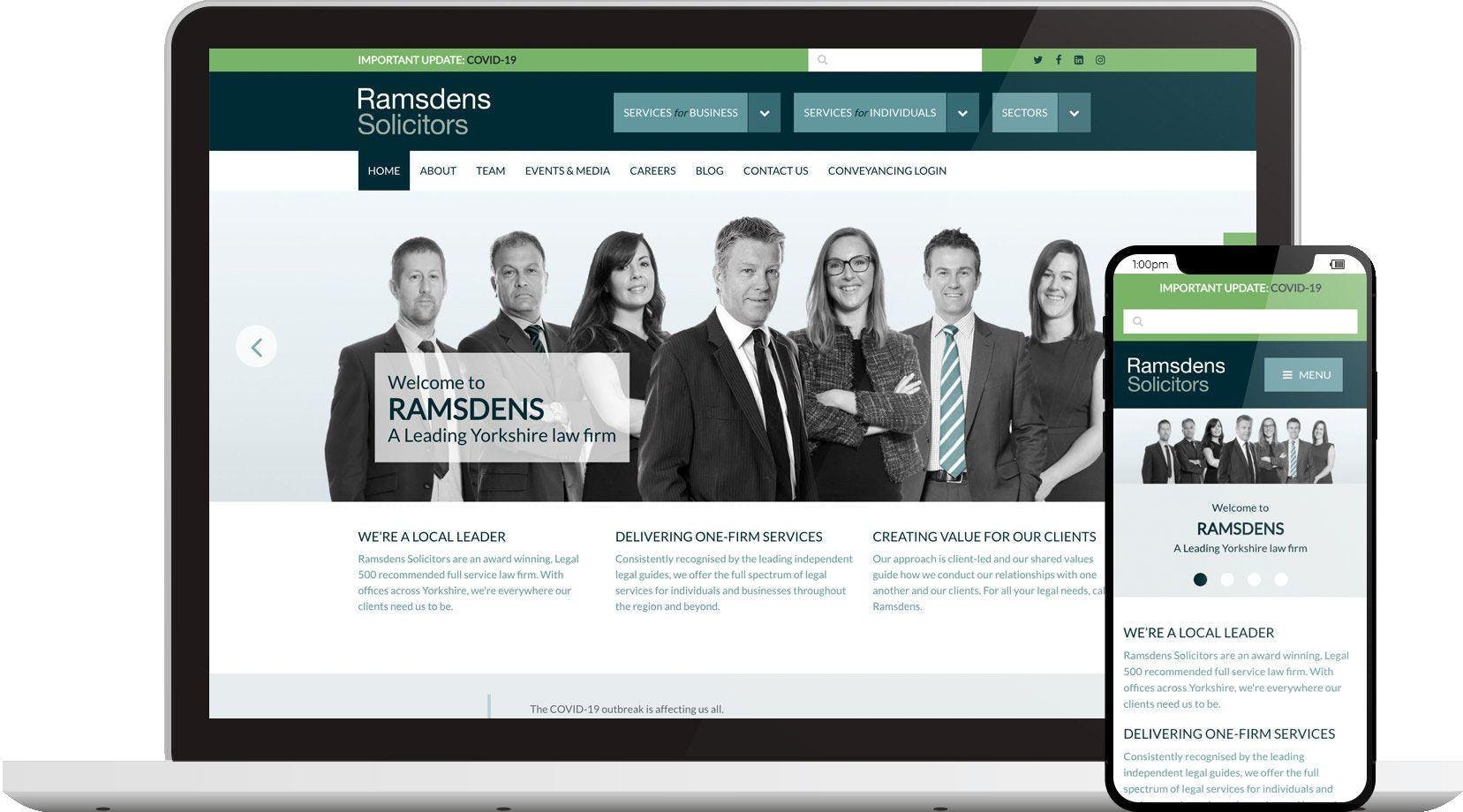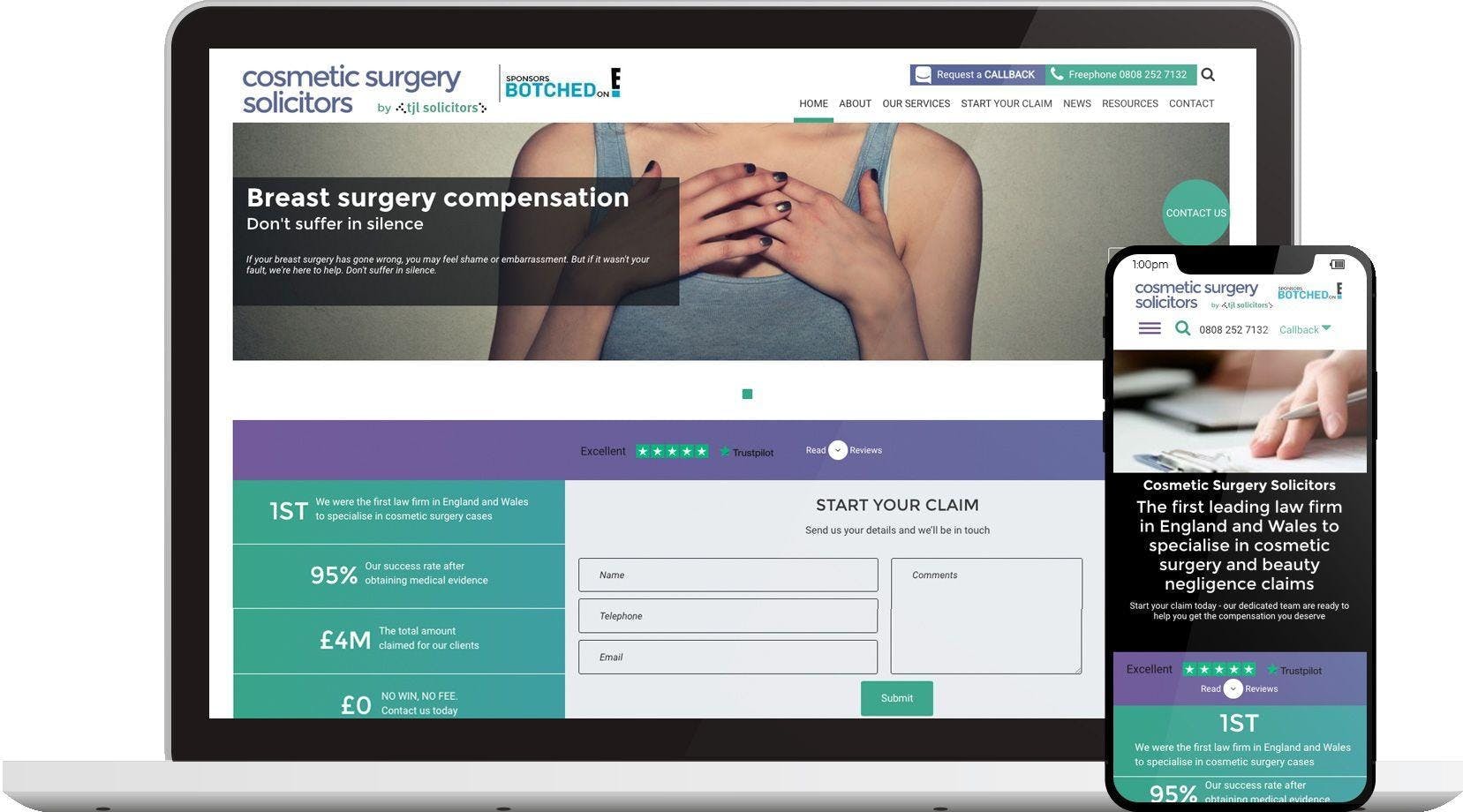JMW has been working with I-COM for many years and we have a great relationship with their team. As a large law firm we have multiple departments that rely on I-COM to deliver marketing support including paid advertising, content marketing, SEO, PR, and design/ development. We work very closely together to come up with creative ways to promote our business and drive high quality leads. If you are looking for a digital agency who are professional, hands on and deliver results then you should consider working with them.
Sarah Horsley, Personal Injury Marketing Manager at JMW
Driving Real Results.
Content Marketing Services
Digital content is the bread and butter of any effective digital marketing strategy. While PR campaigns are fantastic for spreading the word about your work, and paid advertising can help you to pinpoint your target market across search engines and social media, your website is your business's digital home. Informative, evergreen articles and crafted keyword-optimised service pages offer a foundation for your customers to learn how you can help them through tangible and detailed means.
An effective content marketing strategy helps businesses and brands grow by:
- Creating a bigger, more sustainable sales pipeline by reaching your target audience and building brand awareness
- Increasing SEO performance ensures you remain competitive and improve performance in the long run
- Establishing yourself as a thought leader in your industry through regular coverage and media features
- Going head-to-head (and beating) your biggest competitors on the web
As a highly experienced content marketing agency, we will create engaging, educational and entertaining content that will get your business noticed, get you in front of prospective customers and clients and deliver real, verifiable results.
- +30.7%
- Leads for Ramsdens Solicitors
- +144.7%
- Organic Inquiries for Cosmetic Surgery Solicitors
- +156%
- Traffic for Matthews & Goodman
Content marketing helps your brand become more well-known and well-liked among the whole pool of your potential customers, no matter how close they are to parting with their money. And that means a sustainable, ever-growing pipeline.
Content Marketing Services
What's Included?
The benefits of working with a full-service digital marketing agency are that we can provide content and copy for virtually every marketing channel, including organic marketing, paid advertising, social media, and more.
In practical terms, our content marketing strategy focuses on:
- Writing new content for your website, including new service pages to draw customers to your new and existing offerings, informative articles and blog content to answer your potential customers' queries and guide them to your services, and for any other areas of your site that require search engine optimisation.
- Improving and updating the existing content on your website, bringing it up to the standards demanded by ever-changing search engine requirements and your own brand messaging and identity.
We do this by producing detailed and keyword-targeted content, ensuring it is seen by your target audience, engages them, provides them with the information they are searching for, and ultimately encourages them to convert to your service as a trusting customer.
Our content marketing team also specialises in the following areas of digital marketing:
- Planning and implementing social media strategy, from commentary on current trends to promoting business wins and connecting with social media audiences relevant to your operations. Social media marketing requires adaptability and collaboration - we will work closely with you to form a reactive process that engages your target market and reaches new potential customers.
- Formulating an email marketing campaign that is visually appealing, tailored to the behaviours of your customers, and that builds and maintains a strong relationship with them.
Click on the links below to explore our core services in more detail. However, if you have something specific in mind that we have not listed below, we would love to hear from you! We pride ourselves on being a creative agency. Our in-house marketing team is flexible and forward-thinking, always searching for new ways to use technology to build the right strategy for your business goals.
On-Site Content
On-site content and web page copy including SEO metadata, articles and blog posts, industry reports, e-books, whitepapers, guides, and slide decks
Off-Site Content
SEO-driven copy for off-site guest features to improve brand visibility and backlinks back to your website to improve its organic performance in Google search results
Brand Awareness
Full brand campaigns incorporating email marketing, blog posts and articles, downloadable assets, quizzes, surveys, case studies, testimonials, webinars, podcasts, and more
PR & Outreach
Thought leadership pieces including press releases, press kits, media biographies, and fine-tuned pitches to attract interest and secure coverage for your brand
Advertising Copy
Impactful copy for paid advertising including PPC and paid social campaigns to increase engagement, click-through-rates, and conversions
Video & Animation
Video copy, animations, and visual storyboards to support your campaigns and initiatives in a visually impactful way
Your One-Stop Shop for All Marketing Services
We are I-COM
I-COM is a full-service digital marketing agency. This means we can support every aspect of your marketing needs - from designing and building websites to creating awesomely eye-catching content, managing your paid advertising, running strategic PR campaigns or delivering SEO that really works.
Whatever your business needs, we’re at the ready. Let us enhance the good work you already do - or put your feet up and let us take care of your entire digital marketing efforts.
Frequently Asked Content Marketing Questions
Do I really need content marketing?
Absolutely! Content is key to any successful digital marketing strategy.
Imagine you’re at a networking event and you want to make a splash with fellow attendees and build some valuable relationships. What’s your approach? Be polite, funny, interesting and helpful, or go up to as many people as you can and talk at them about yourself incessantly before asking them for some money? Hopefully it's the former!
Content marketing is all about doing that, but on the web instead. It involves valuable, relevant and interesting content creation - assets, resources and materials designed to get your brand noticed by your target audience.
But it doesn’t just involve the creation of content, it also requires strategic promotion of that content to get it seen by your target audience when they hit the search engines, browse social media, or directly visit your website.
The whole discipline is built around the idea of attracting potential customers to your brand at every stage of the customer journey, rather than just one.
Do I really need a content marketing strategy?
Content is key to any successful digital marketing strategy.
Imagine you are at a networking event and want to make a splash with fellow attendees to build some valuable relationships. What is your approach? Be polite, funny, interesting and helpful, or go up to as many people as you can and talk at them about yourself incessantly before asking them for some money? Hopefully, it is the former!
Content marketing is all about doing that, but on the web instead. It involves valuable, relevant and interesting content creation - assets, resources and materials designed to get your brand noticed by your target audience.
But it does not only involve creating content, it also requires strategic promotion to get it seen by your target audience when they use search engines, browse social media, or visit your website directly.
The whole discipline is built around the idea of attracting potential customers to your brand at every stage of the customer journey, rather than just one.
What is content marketing and why is it important for my business?
Content marketing is a strategic approach focused on creating and distributing valuable, relevant, and consistent content to attract and retain a clearly defined audience - and, ultimately, to drive profitable customer action. Instead of pitching your products or services directly, a content strategy provides relevant and useful content to your prospects and customers to help them solve their issues and guides them to your service.
Effective content marketing builds trust, fosters relationships, enhances conversions, and generates leads. Customers today expect high-quality, consistent content from their favourite brands. Our content strategy will help your business to increase your visibility and educate your potential customers about the products and services you offer. We aim to engage with your audience and grow your customer base organically, providing them with information that they find genuinely helpful.
How does the content marketing process work with I-COM?
From the outset, we will work hand-in-hand with you to understand your objectives, services, target market, industry, challenges, marketing calendars, etc. We will arrange face-to-face meetings, either in our content marketing Manchester office, or we can travel to your business premises or discuss digitally. We want to get to know you and your needs, and using this understanding, we will devise an action-packed content strategy that will outline the best possible chance of meeting your objectives.
We can work as an extension of your internal marketing team to support their activities, or we can take the lead and set the course for your entire digital marketing strategy - the choice is yours. We even lead workshops and offer ongoing consultancy to help guide or develop your in-house skills.
Throughout our content marketing journey, we will carry out ongoing analysis of our work, ensuring it is hitting the mark to match your short and long-term objectives - your success is our success.
Whether you are looking for a B2C or a B2B content marketing agency to drive success, I-COM can help you achieve your goals.
How does I-COM tailor content strategies to different industries?
Our agency’s extensive experience across various sectors allows us to quickly adapt and create bespoke content strategies that resonate with specific audiences. Our strategies are backed by data-driven insights, ensuring that our content is engaging and performs well on search engines and across social platforms, driving measurable outcomes in terms of traffic, leads, and ultimately, sales.
What results can I expect from I-COM's content marketing services?
Our content marketing services deliver tangible and impactful results, including:
- Increased traffic: through well-crafted, SEO-optimised content, we can increase organic traffic to your website, making your business more visible to potential customers.
- Enhanced brand awareness: consistent, high-quality content builds a strong brand presence, making your business a thought leader in your industry and increasing your visibility across digital platforms.
- Improved lead generation and conversion rates: the ultimate goal is to convert your potential customers into paying customers.
- Higher engagement: engaging and relevant content leads to increased user interaction on social media and websites, fostering a satisfied and loyal customer base.
Long-term ROI: content marketing is a long-term strategy that builds over time, meaning the results are sustainable and grow as you continue to invest in consistent, quality content creation.
Why should I choose I-COM?
We know there are a lot of content marketing agencies out there, but not all are built the same. What makes I-COM’s content marketing team different is strategy.
We do not simply throw content at the wall to see what sticks; we develop neatly packaged digital marketing strategies and campaigns that tell stories, slice through the second-rate content churned out by your competitors, and make a difference to the people who you want to notice you. And we get tangible results.
Not only that, we pride ourselves on the broad range of sectors we can work with - ranging from e-commerce, and education to legal and recruitment. Our content marketing team are experts in rapidly getting to grips with pretty much any industry, no matter how technical or niche, and delivering results quickly and effectively.
If you feel like I-COM's digital marketing services make sense for your business and want to reach more of your target audience effectively and efficiently, contact us via the form button or call us on 0161 402 3170.
What Our Clients Say
Digital Marketing Specialists
We are I-COM
Formed in 2005, we have grown to be one of Manchester's largest independent digital marketing agencies.
With a large in-house team of specialists we provide a range of digital services including web design, web development, digital marketing, SEO, branding, content marketing, PR and outreach, social media marketing and paid search marketing, we cover every digital marketing need you may have. Call on 0161 402 3170 or use the contact form to get in touch.












